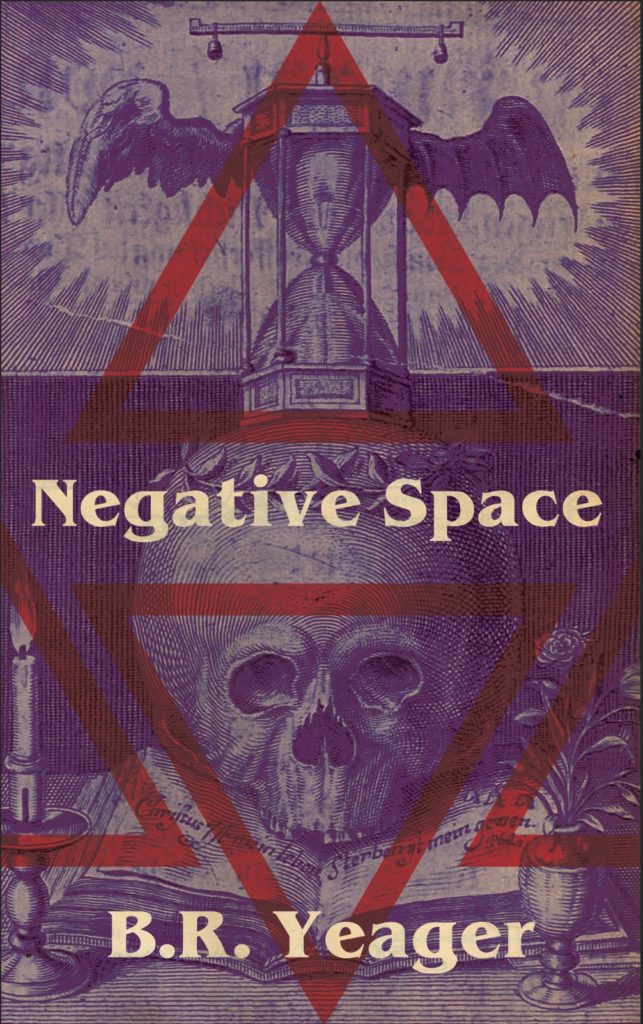
B.R. Yeager’s novel Negative Space is a coming-of-age book full of autumnal imagery and featuring a trio of narrators each struggling with complex issues within their own lives. In that, it is familiar. It’s also a novel in which the border between life and death is navigated with little explanation; where unsettling rituals spark paranoia and obsession; where certain familiar sights and sounds pull back to reveal horrors lurking on the other side. It’s not always the easiest of reads — due to both its structure and its subject matter — but it is deeply rewarding, in its own harrowing way. Reading it at a time when familiar routines are upended at a moment’s notice and the idea of a status quo seems like a luxurious illusion, it feels perfectly suited to this moment in history — a distillation of every emotion I’m feeling right now, in the form of a narrative both familiar and thoroughly unpredictable.
Much of Negative Space is set in western Massachusetts. The trio of narrators — Ahmir, Jill, and Lu — all begin the novel by discussing a fourth person, Tyler. The four attend high school together. Ahmir and Tyler are friends; Jill and Tyler are a couple. Lu has a little more distance from Tyler — “I only knew him because of her,” she says early in the book. But he’s a charismatic figure to all three, and one whose presence is laced with violence. Ahmir and Lu both share memories of him using a box cutter to harm himself; Jill recounts the time they met, in what appears to have been a mental hospital. This is a book in which trauma is present from the outset.
“Everyone knew Tyler was going to die young,” Ahmir says — but this isn’t a typical novel of a doomed young man and the people around him. Instead, it’s one where realism slowly falls by the wayside. In the book’s first chapter, Yeager introduces the idea of local paranormal legends; he also discusses WHORL, a substance many of the book’s characters use to get high, and which they can buy at the local convenience store. Ahmir’s experience in one early passage suggests something horrific lurking just below the surface here:
I looked up through the branches to the sky. I thought they were birds, at first. But they were millions more of the thin black strands, stretching down through the atmosphere, grasping trees and wrapping around trunks.
I’m being careful here not to talk too much about the directions in which this book goes; some of the novel’s power comes from its unpredictability, and in telling this story through the perspective of narrators who are thoroughly enmeshed in it, there’s no point in which one can easily step back and gain perspective. That feels true, both to the characters — all of whom are navigating their final year of high school and pondering their futures — and to the bizarre specifics of this narrative.
Yeager also throws in knowing takes on house shows and online discussion forums; Dennis Cooper’s The Sluts is one point of reference that came up repeatedly as I read this, both for its description of online communities and for its constant narrative pullback, where nestled layers of reality shifted, to disconcerting effect. One is also left with the sense that Yeager has figured out how to achieve the same sort of disconcerting power that David Lynch gets from his most jarring moments — think of Twin Peaks: The Return, Part 8 or Inland Empire.
This is not a novel that lacks for ambition, both narratively or thematically. It might be accurate to say that this is a book about the way your hometown haunts you, but that’s too simple; it might be accurate to say that this is a book about children and parents, but that doesn’t quite sum it up, either. It’s a novel about everything; it’s also utterly terrifying. But that seems more appropriate than not, doesn’t it?
***
Negative Space
by B.R. Yeager
Apocalypse Party; 382 p.
Follow Vol. 1 Brooklyn on Twitter, Facebook, and sign up for our mailing list.
